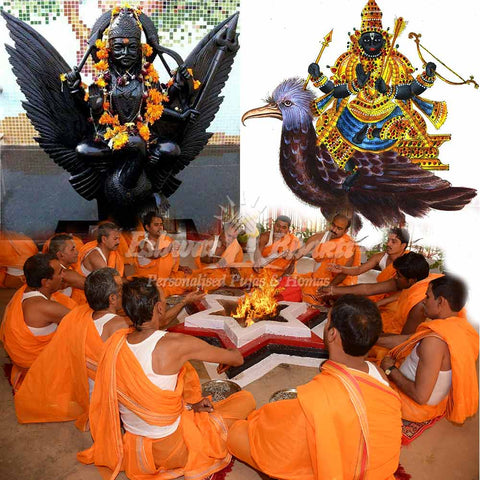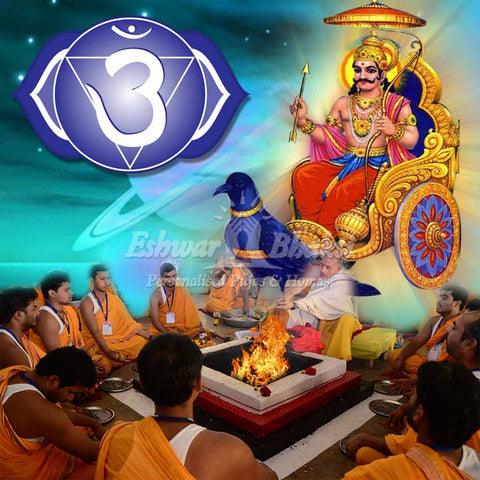Why do we pierce Ears?
 There are a plethora of rituals embedded in Indian tradition and culture. In the ancient period, saints and learned people have associated practices that can have a positive impact on our minds and bodies with rituals and customs. The idea was to ensure that people would take part in these activities without fail, even with time. Ear piercing is one such ritual attested to Hinduism that can have a lot of benefits to our physical, emotional, and psychological selves. Here, we will be discussing the origin of ear piercing or Karna Vedha Samskara, its religious and scientific significance.
There are a plethora of rituals embedded in Indian tradition and culture. In the ancient period, saints and learned people have associated practices that can have a positive impact on our minds and bodies with rituals and customs. The idea was to ensure that people would take part in these activities without fail, even with time. Ear piercing is one such ritual attested to Hinduism that can have a lot of benefits to our physical, emotional, and psychological selves. Here, we will be discussing the origin of ear piercing or Karna Vedha Samskara, its religious and scientific significance.
Karna Vedha is derived from the Sanskrit words- Karna, which means ear, and Vedha, which means piercing. It is part of Shodhasha Samskara. Shodhasha Samskara refers to the sixteen ceremonies that a person has to perform between his or her life and death. It includes certain rituals and sacrifices like childbirth, marriage, education, death, etc. For Brahmins, Karna Vedha or piercing of the ears is as significant as Upananyan. From the ancient days, people performed Karna Vedha irrespective of their caste and gender.
As per legends, devotees considered our ears as similar to the holy symbol, Om. When we pierce our ears, it is akin to putting a dot on the Om. There are mentions of Karna Vedha in the old Prakrit as well as Sanskrit textbooks. In previous centuries, people did not rely upon pieces of jewelry to adorn their ears. Women often used fresh flowers as their piercings. Karnaphul was a flower used for this purpose.
Significance of ear piercing in Hinduism: As mentioned earlier, the piercing of our ears can have a lot of benefits. It was a practice that began in the ancient Vedic age. The central point in our ears helps to protect our body from different diseases. Hippocrates, the father of western medicine, in 470 B.C., wrote about the significance of ear piercing, especially for women.
Ayurvedic texts and scholars have discussed the importance of Karna Vedha from the 6th century B.C. Here, we will be delving into the religious and scientific significance of piercing our ears.
Religious Significance: Different parts of India have diverse reasons and stories behind the relevance of piercing our ears. However, it is one of those practices that takes place in every Hindu household. People conduct the ear-piercing ceremony of a child on an auspicious day after offering pujas and prayers to the deities. A goldsmith often performs Karna Vedha with the aid of a gold needle. Nowadays, there are different options available for piercing one's ears. Many rely upon surgeons to pierce the ears of their babies. Other religious significances of performing Karna Vedha include:
• There is a belief that Karna Vedha opens our inner eyes, which facilitates us with the potential to receive sacred sounds.
• In Dharma Sindu, there is a description of when to perform Karna Vedha. Devotees must conduct it during the sixth or seventh month of the child. If you are unable to carry it out by then, you can have it done in an odd year. For instance, when the child is three years old, five years, seven years, etc.
• In the Vedas, there is a mention of the importance of Karna Vedha in the Brahmana portion. Performing Karna Vedha can aid in improving our focus and also help us in our spiritual awakening.
• For a boy child, the first ear to be pierced is the right one. For a girl child, it is the left ear. It is because the right side is the path of masculinity, and the left is that of femininity.
• You can balance the deficiencies of energy by using a gold earring.
• You can overcome the problems of excessive energy flow by wearing a silver earring.
Scientific Significance: Susruta, 6th century B.C Ayurvedic researcher, wrote about the importance of ear piercing as protection from several diseases. It can help in preventing hernia and hydroceles. Susruta elaborated on how to perform the ceremony in one of the Ayurvedic textbooks.
The procedure of Ear piercing includes:
1. Perform ear piercings when the child is in his or her 6th or 7th month.
2. It must be an auspicious day.
3. It is necessary to have the child in his or her mother's lap.
4. The surgeon or the goldsmith has to pull the ear with the left hand. It is essential to find natural holes with the aid of sunlight.
5. You can pierce it with a needle if the ear is tender. You can do it after an examination in case the ear is stiff.
There are many scientific benefits of piercing our ears. They include:
• According to Ayurveda, the central point of our ear plays a crucial role in our reproductive health.
• When the ears are pierced at a young age, it ensures their proper brain development. It is because the central point of our ears connects the right and left hemispheres of our brain.
• It can improve our eyesight. There are acupressure points on the ears, which help in improving the hearing of a child.
• It can aid in preventing OCD, anxiety, and nervousness.
• In women, ear-piercing helps in providing regularity for their menstrual cycle.
These are some of the most significant reasons for Karna Vedha or piercing of one's ears.
Karna Vedha is not just a ritualistic practice. It has profound relevance in our lives. Nowadays, ear piercing has become a fashion statement, and most of us are unaware of its benefits. We need to understand and adopt these practices into our lives for our wholistic development as well as well being.









What happens if male gets left ear pierced first??